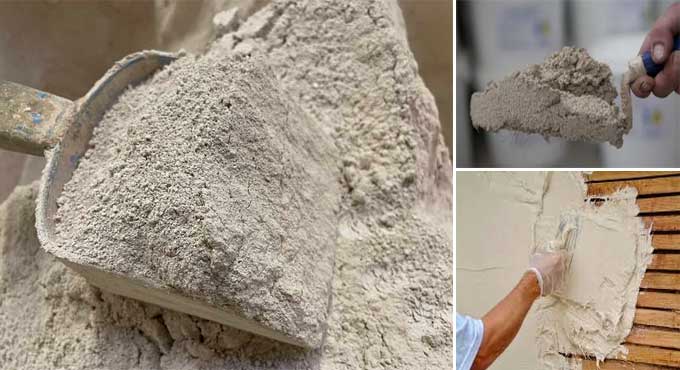
An Overview of Lime for Construction in 2023

Generally, lime does not occur in nature in its free state, but is obtained by burning limestone, limestone builders, shells of sea creatures, or limestone found in limestone hills.
Lime Construction Process
The production of lime depends on heating limestone, which is a calcium carbonate compound that is mostly pure. As the lime is heated, carbon dioxide is driven away, leaving behind non-volatile impurities such as silicon oxide, magnesium oxide, aluminum oxide, iron oxide, and manganese oxide.
It melts at 2570?C when it is pure calcium oxide. Generally, molten material solidifies into cubic crystals when cooled, but it is non-crystalline, easily powdered, and has a specific gravity between 3.08 and 3.3 when un-cooled. As lime is heated, its specific gravity increases, leading to a denser product at higher temperatures.
Materials of Lime
Soluble Silica
Chemically combining limestone with silica and alumina is essential for hydraulicity. Ca, magnesium, and aluminum silicates cause hydraulicity. A low temperature inserts these silicates, and at a higher temperature they become active and mix with lime.
Metallic Oxides & Alkali
The soluble silicates tend to form only at lower temperatures, causing hydraulicity and turgidity.
Carbonaceous Matter
It produces poor quality lime when carbonaceous matter is present.
Sulphates
Slaking is reduced when they are not too much, but setting action is increased when they are not too much.
Iron Compounds
If iron compounds are present, limestone's calcination temperature is lowered.
Clay
Lime's hydraulicity is caused by it. A small amount of it retards slaking, and a large amount arrests slaking. Excess amounts of clay make lime insoluble in water. A clay content of 8 to 30% is desirable when making lime.
Magnesium Carbonate
By increasing the setting process, slack is reduced. A lime which contains less than 5% magnesium carbonate produces better results and gives the lime a greater hydraulic property. A lime containing a large proportion of magnesium carbonate is more prone to cracking. Even without clay, when magnesium carbonate content is about 30%, hydraulicity is rendered to lime.Lime Applications
? It creates good sanitary conditions in foul, damp, and filthy places. The material is used to make concrete matrixes.
? Mortar for stoneware and bedding and jointing low-strength brickwork use it as a binding material.
? Among other uses, it is used to plaster walls and ceilings.
? The product is useful in the process of whitewashing and in the preparation of distempers.
? Timberwork is knotted with it before being painted.
? Several products are made from it, including artificial stone, lime & bricks, foam silicate products, etc.
? As a result of the combination of lime and cement, lime cement mortar acquires such valuable properties as to replace cement plaster and serve as a plasticizer.
? In steelmaking, it acts as a flux.
? Masonry work below ground can be mostly done with hydraulic lime.
? Paints are made from it, and soil is stabilized using it.
Hydraulic Lime
Hydraulic lime is also known as water lime, and is divided into three types based upon the percentage of clay: Feebly Hydraulic Lime, Moderately Hydraulic Lime, and Extremely Hydraulic Lime.
In increases in clay percentage, slaking becomes more difficult and hydraulic property is increased. It forms a thin paste with water when set underwater or in thick walls without free air circulation.
Since it is not perfectly white in color, it looks less sanitary than flat lime. This cement like substance contains about 30% clay and resembles hydraulic lime.
Flat Lime
There are many names for lime, including rich, flat, common, high calcium, air, and pure lime. Due to its vigorous slake and increased volume, it is also known as Flat Lime.
This product is produced by calcining comparatively pure carbonate of lime that contains about 95% calcium oxide. Walls are whitewashed with it and plastered with it.
To learn more, watch the following video tutorial.
Video Source: Ekeeda
Lime mortar, made from lime and sand, is used for thin brickwork and stonework joints. For thick masonry walls and foundations, lime mortar can be made from lime and surkhi.
Poor Lime
More than 30% of it is clay and is also called lean or meager. There is a muddy white color to it, and it slakes slowly. When water is added, it forms a thin paste. In addition, it has poor binding properties and sets or hardens very slowly. Due to the poor quality of the mortar made with this type of lime, it is used for inferior projects.


